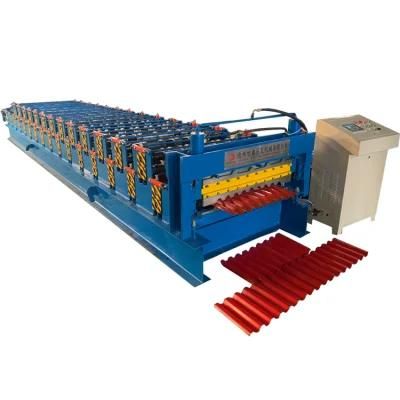
Double Trapezoidal Layer Roof Tile Roll Forming Machine
Cangzhou Dixin Roll Forming Machine Co., Ltd.- Certification:CE, ISO, ISO9001: 2000, ISO 9001:2008, Ce, ISO 9001:2000
- Condition:New
Base Info
- Model NO.:double roof making machine
- Customized:Customized
- Usage:Roof, Wall, Floor
- Transmission Method:Hydraulic Pressure
- Mode:Profile and Curved Roofing Sheet Making Machine
- Panel Profile:Can Be Design as Your Requiirement
- Feeding Width:1200mm and 1120mm or as Panel Drawing
- Feeding Thickness:0.25-0.75mm
- Control System:PLC Control and Manual Control
- Roller Material:No.45 Forged Steel with 0.05mm Chromium
- Shaft Diameterl:75mm
- Forming Steps:15 Rows and 13 Rows or as Panel Drawing
- Quality Gurantee:One Yaer
- Forming Speed:8-12m,Min
- Transport Package:Waterproof Package
- Specification:840,25, 825,18
- Trademark:DIXIN
- Origin:China, Hebei
- HS Code:845522
- Production Capacity:10 Sets Per Month
Description
Basic Info.
Model NO. double roof making machine Customized Customized Usage Roof, Wall, Floor Transmission Method Hydraulic Pressure Mode Profile and Curved Roofing Sheet Making Machine Panel Profile Can Be Design as Your Requiirement Feeding Width 1200mm and 1120mm or as Panel Drawing Feeding Thickness 0.25-0.75mm Control System PLC Control and Manual Control Roller Material No.45 Forged Steel with 0.05mm Chromium Shaft Diameterl 75mm Forming Steps 15 Rows and 13 Rows or as Panel Drawing Quality Gurantee One Yaer Forming Speed 8-12m/Min Transport Package Waterproof Package Specification 840/25, 825/18 Trademark DIXIN Origin China, Hebei HS Code 845522 Production Capacity 10 Sets Per MonthProduct Description
double trapezoidal layer roof tile roll forming machineWe know well the requirements for the customers from different countries and have an outstanding export teams who will take care of your requests. Our experts and skilled workers complete the work with great precision.
We provide an extensive line of products, including roof and wall panel machine, tile roof machine, purlin forming machine, shutter door machine, floor decking machine and other associated equipment.
Our products have been sold worldwide over 90 countries including America, the UK, Australia, India, Sri Lanka South Africa, Tanzania, Nigeria etc.
1.some machine pictures
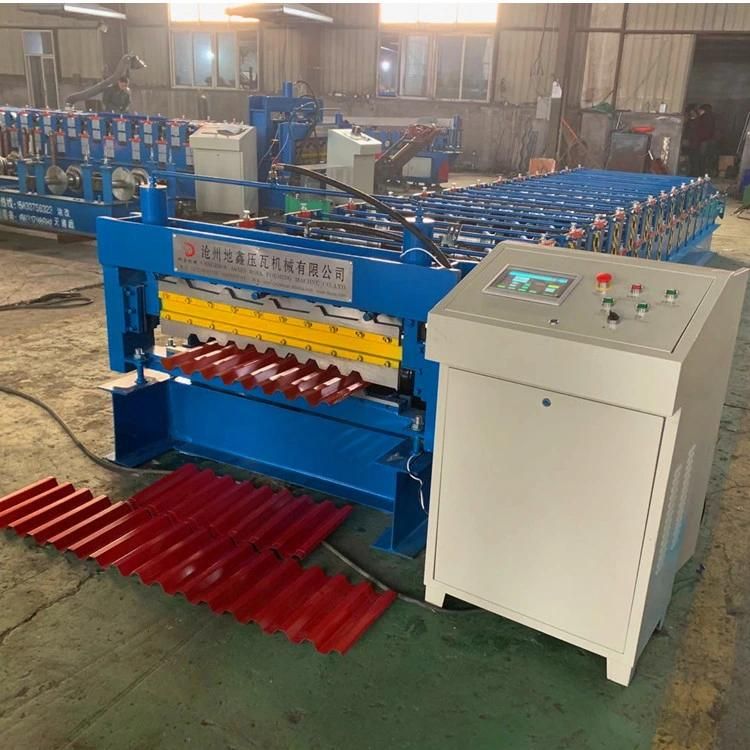
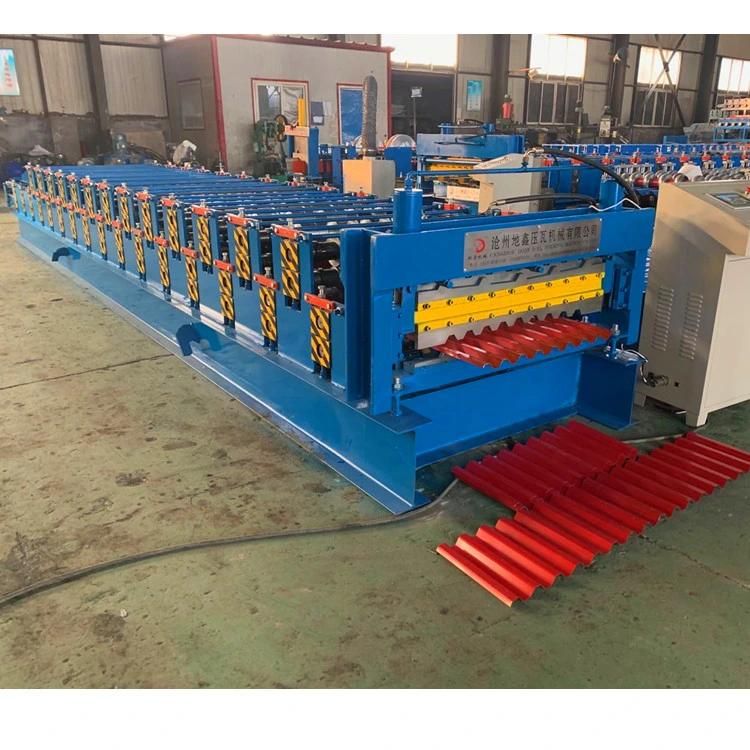
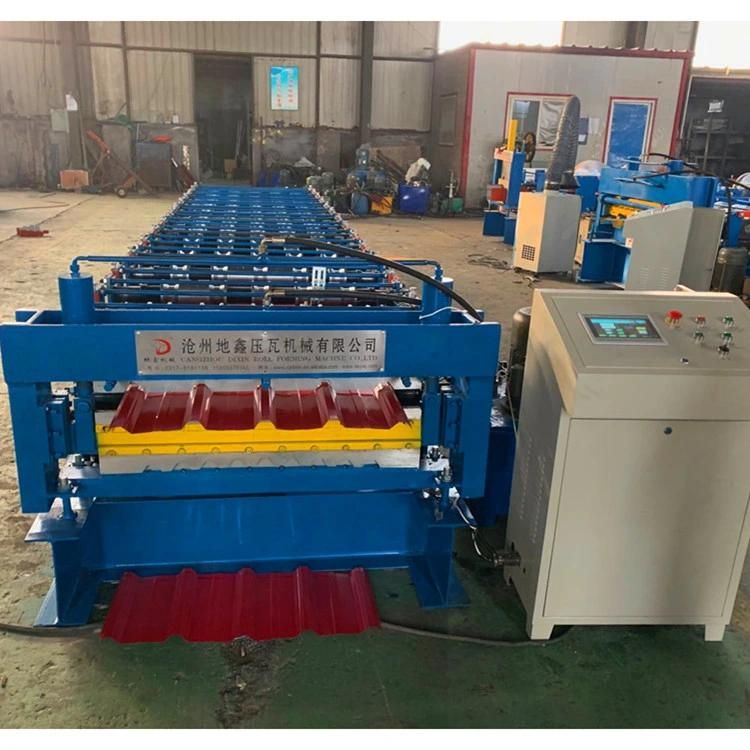
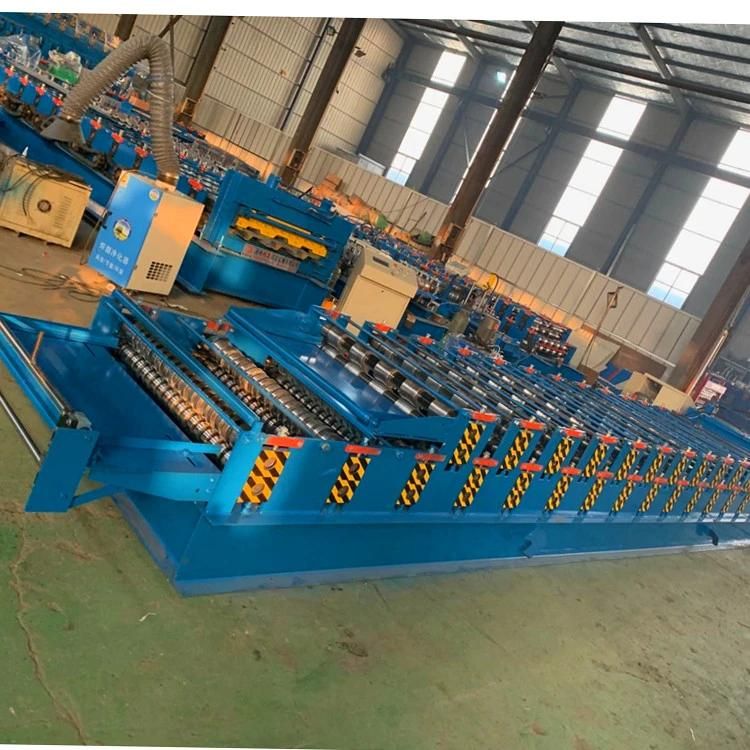
2.Equipment detailed parameters:
| 1.Processing material | aluzinc/galvanized steel/colored steel coil |
| 2.Material thickness | 0.3-0.8mm |
| 3.Feeding width: | As design |
| 4.Effective width | As design |
| 5.Main motor power | 5.5kw |
| 6.Pump station power | 4kw |
| 7. Shaft diameter | 75mm |
| 8.Forming steps | 13steps |
| 9.Main frame | 400H STEEL FRAME |
| 10. Side plate thickness | The whole side plate16mm |
| 11.Roller material | CR12 |
| 12.Control systerm | (Taiwan brand)Delta PLC control system with touch screen |
| 13.Cutting blade material | Cr12 |
| 14.Working speed | About 25-30m/min |
| 15. Transmission way | Gear transmission |
| 16.Shear mode | Servo motor tracking, non-stop cutting |
| 17. Machine size (mm) | About 8500*1500*1400mm |
| 18. Machine weight | About 3.5 ton |
| 19.Power supply | 380v,3phase,60hz or accodring to customer request |
3.customer visit our factory
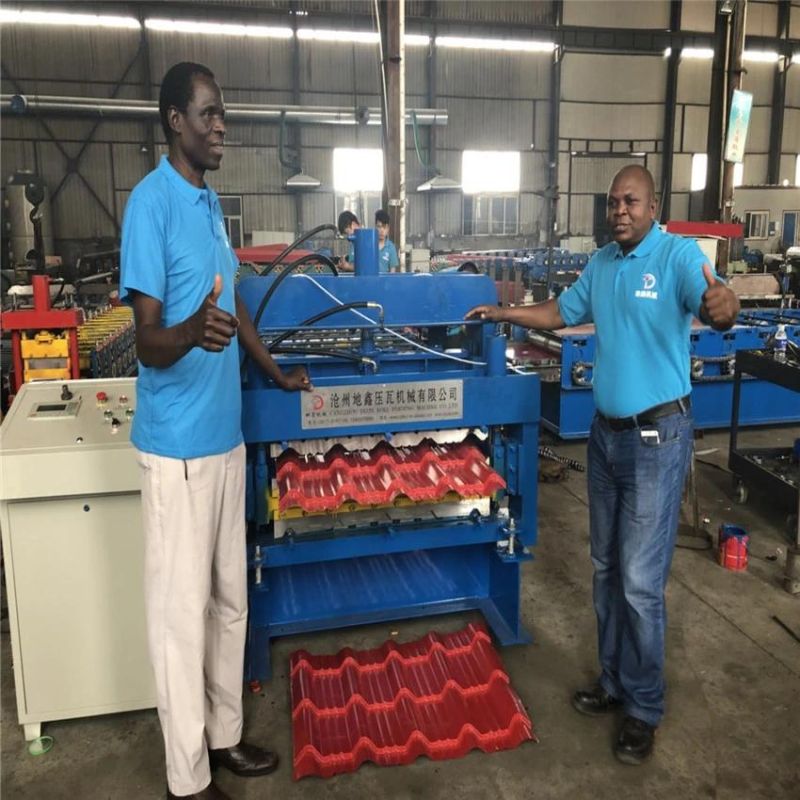
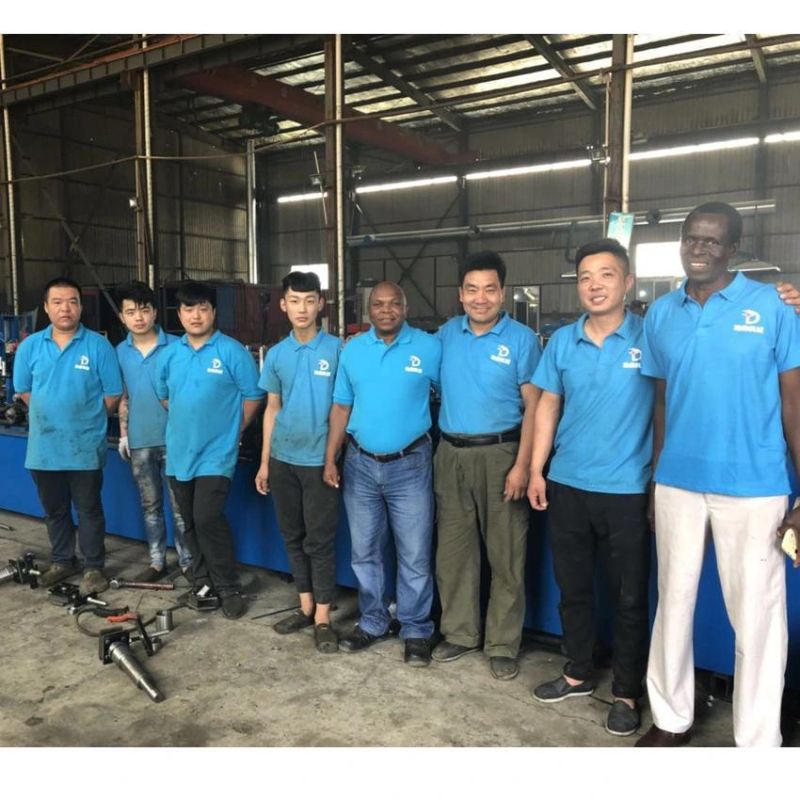
2. Rules of roll forming
1. The material being formed must use the same length at each forming operation. If the length of material varies from one forming operation to another, unnecessary stresses can build up causing problems such as ripples, herringboning and double bending.
2. Stresses in the formed elements and the sheet edges must be well within the yield stress of the material. Stress levels above the yield stress will cause the material to increase in length and subsequently create either a wave on the strip edge, or cause the section to curve away from the stressed edge where the two edges are turned up. In the case of a section with one up-turned edge and one down-turned edge, the stress will manifest as a twist along the length of the sheet. On thinner materials high stresses usually manifest themselves as a herringbone effect.
3. The material spring back must be allowed for by over bending. Unless an allowance is made for spring back the outer forms will lie back, and where humps or similar are formed in the centre of the section the overall cover width will expand.
4. The neutral axis must be used wherever possible. Forming on the neutral axis creates equal stresses of a lower order than base line forming and will produce a level section on exiting the forming process. Base line forming on higher sided profiles will normally create a downward curve in the sheet.
5. The peripheral speed of the roll contact faces should be constant within a small tolerance. When the peripheral speed of a roll varies to that of the linear speed of the section being formed scuffing will occur. This will result in damage to the surface of the material and reduced roll life. Opening up the gap between top and bottom rolls to reduce the scuffing will cause malformation of the profile.
6. The line of the form over the forming stations must be convex. If a line taken over the tops of the push up rolls over the forming stations does not form a convex shape, the leading edge of the sheet passing over the final form roll will lift clear of the intermediate form rolls. This lifting will cause increased stresses in the sheet at the final rolls.
7. When a roll pushes up a bend there should be a corresponding roll to bend about. When a form roll pushes on the section, if there is not a roll for it to bend about the form will take the easiest route, usually bending the section away from the roll. if u have any other inquiry about it ,please contact me any time
